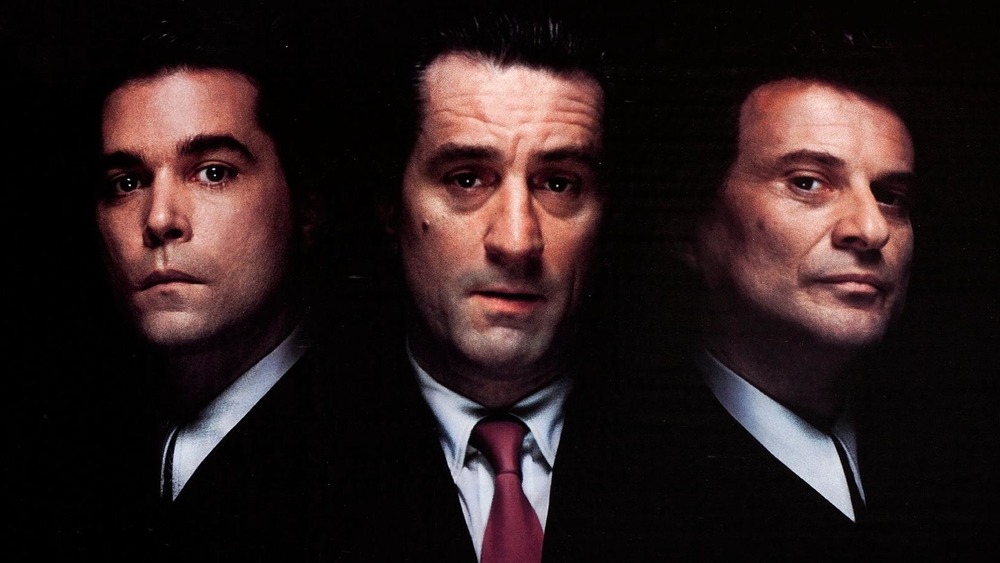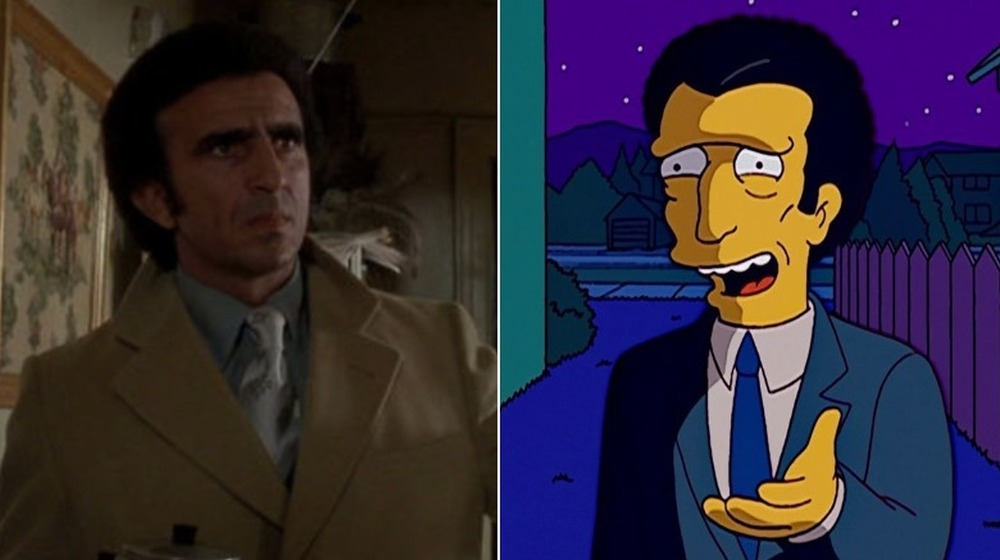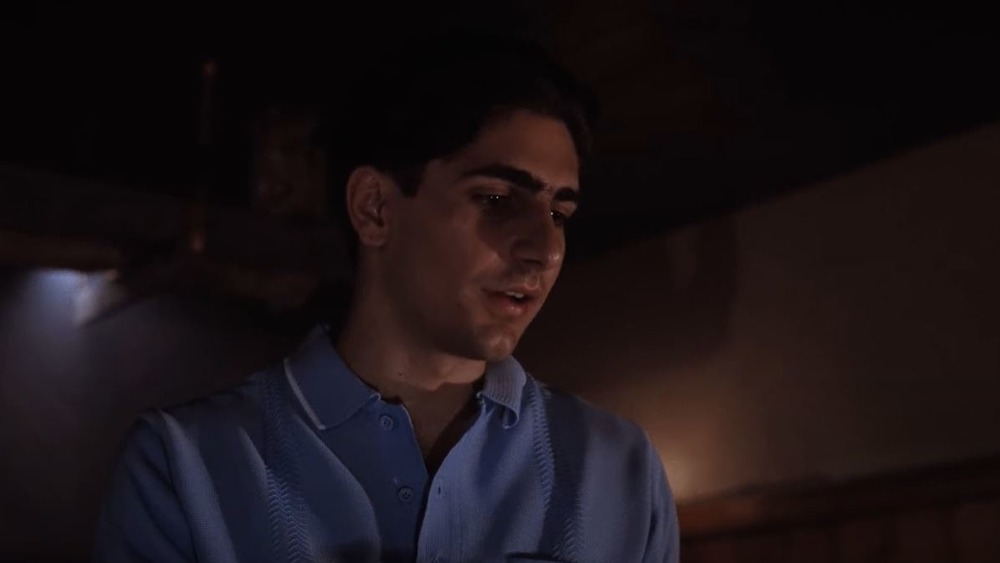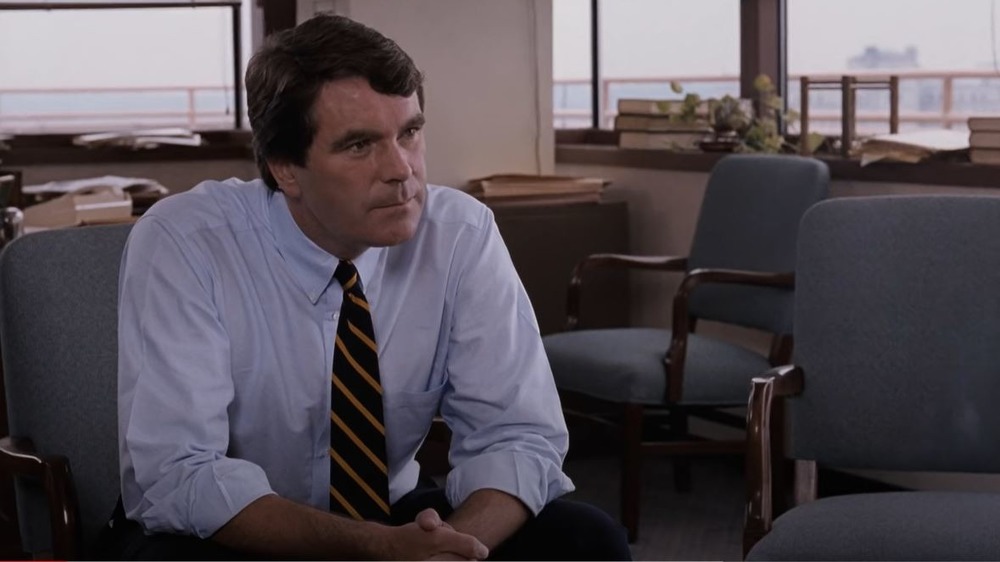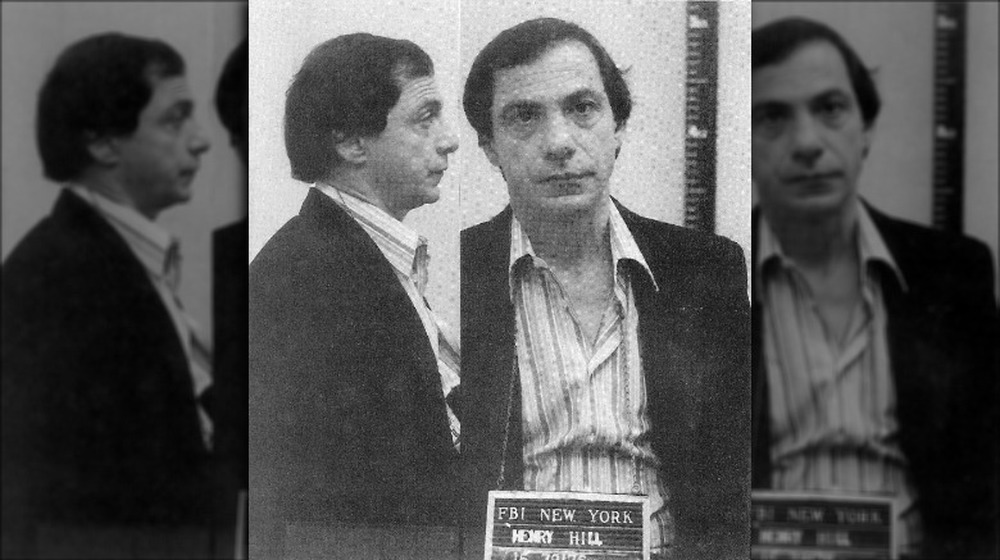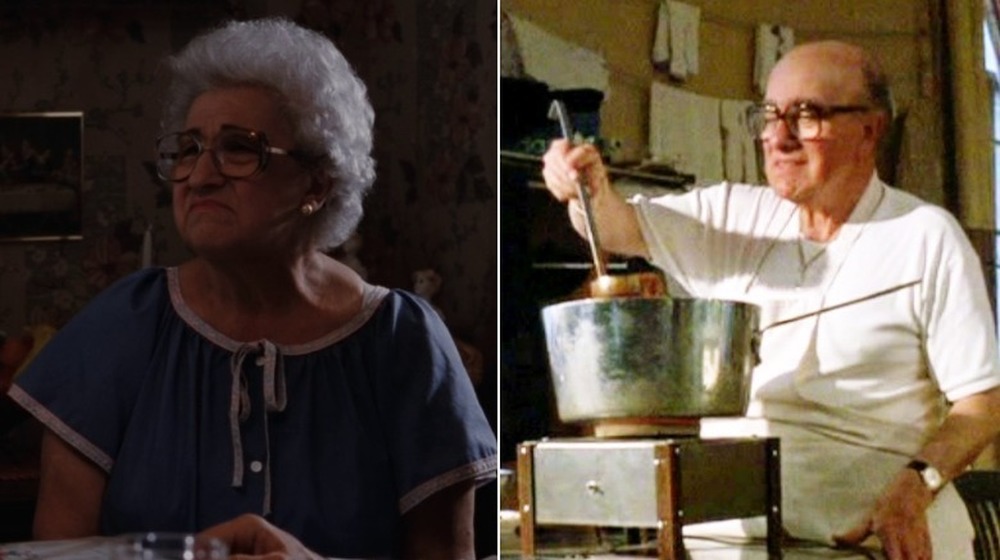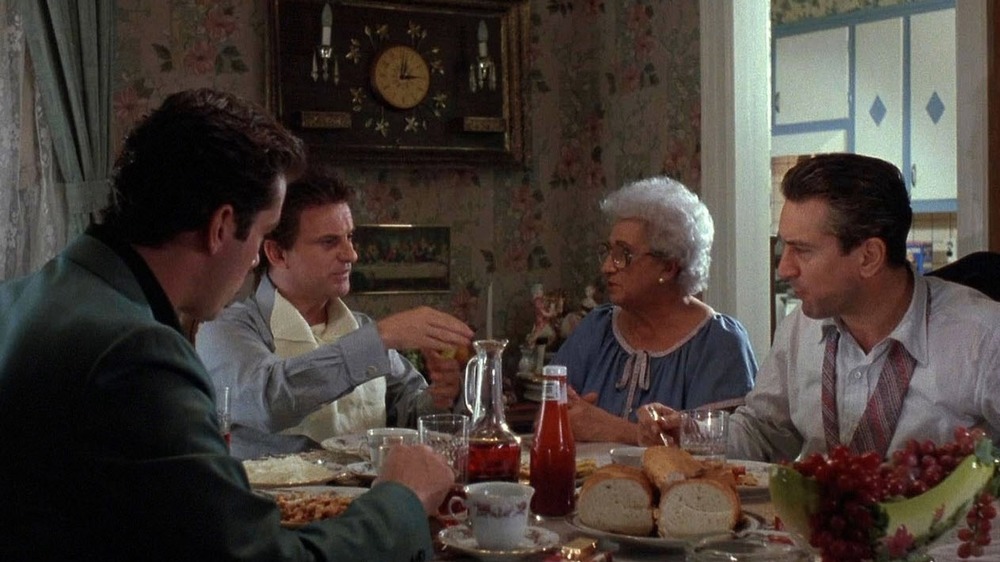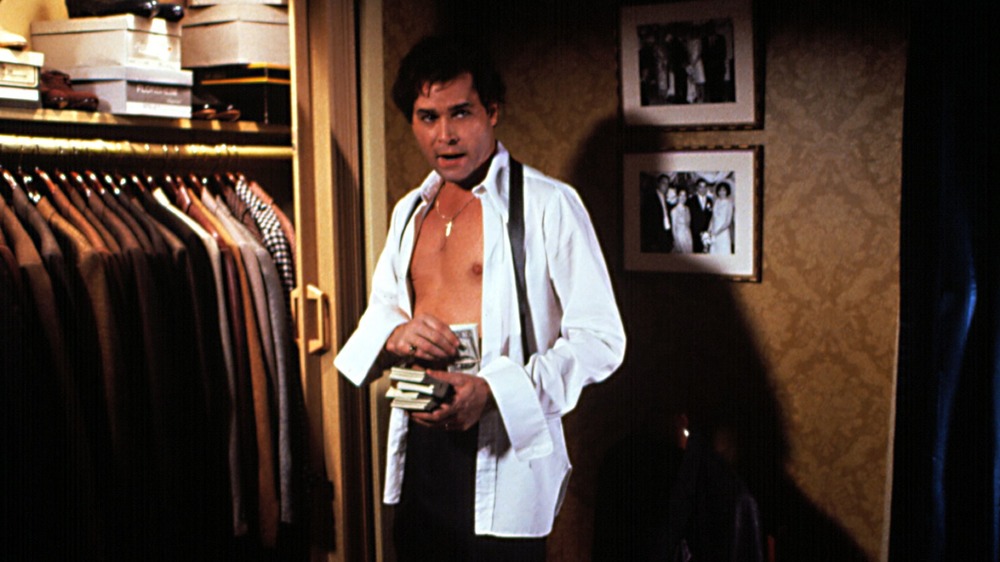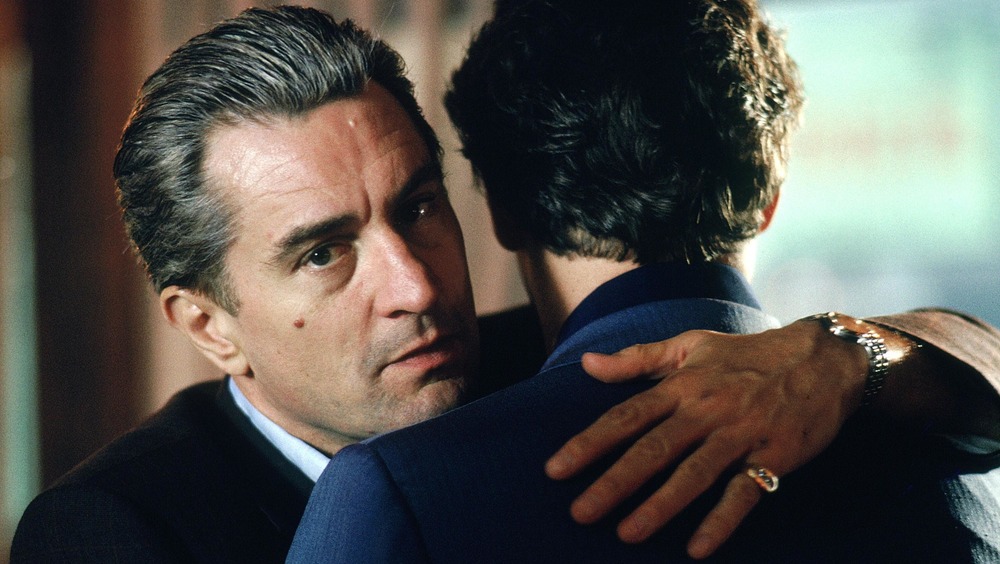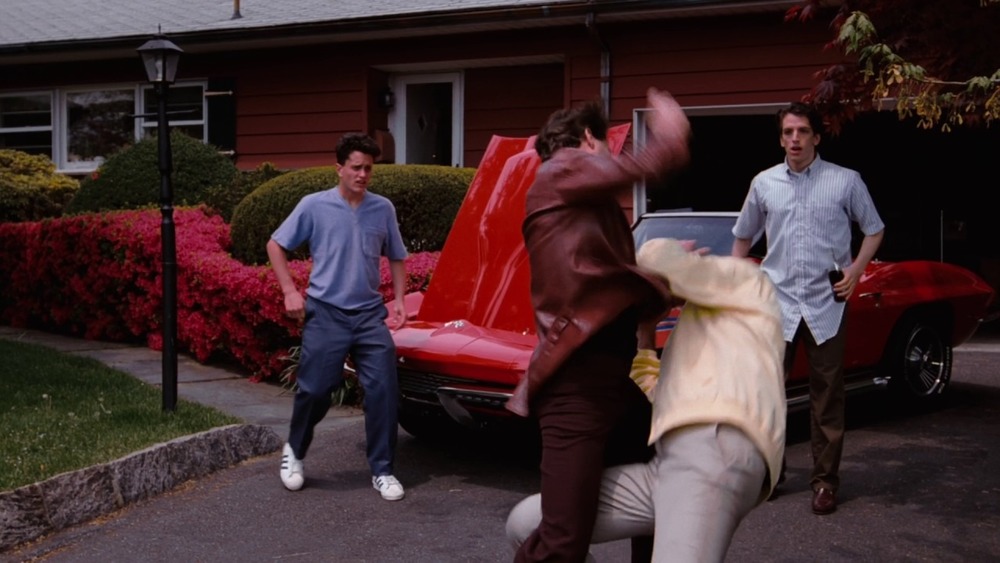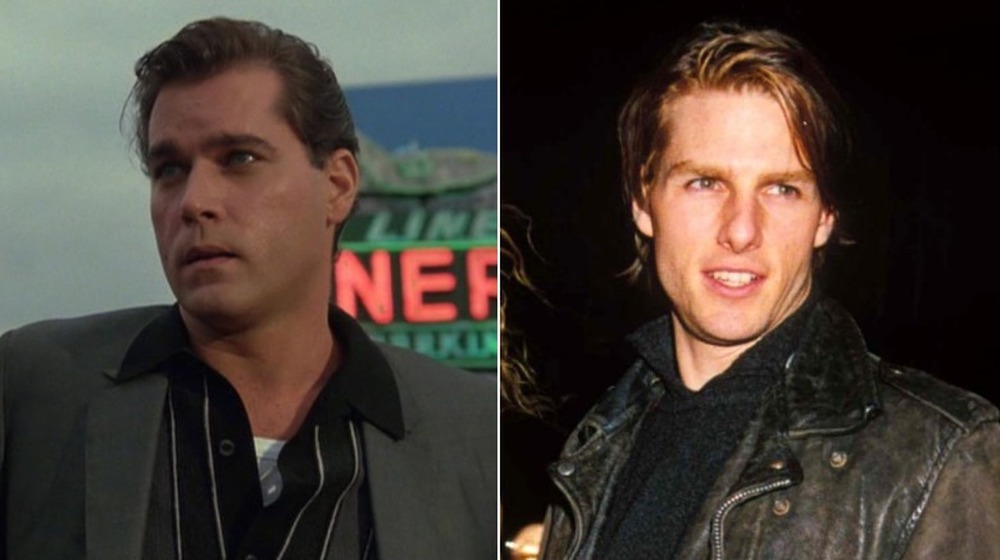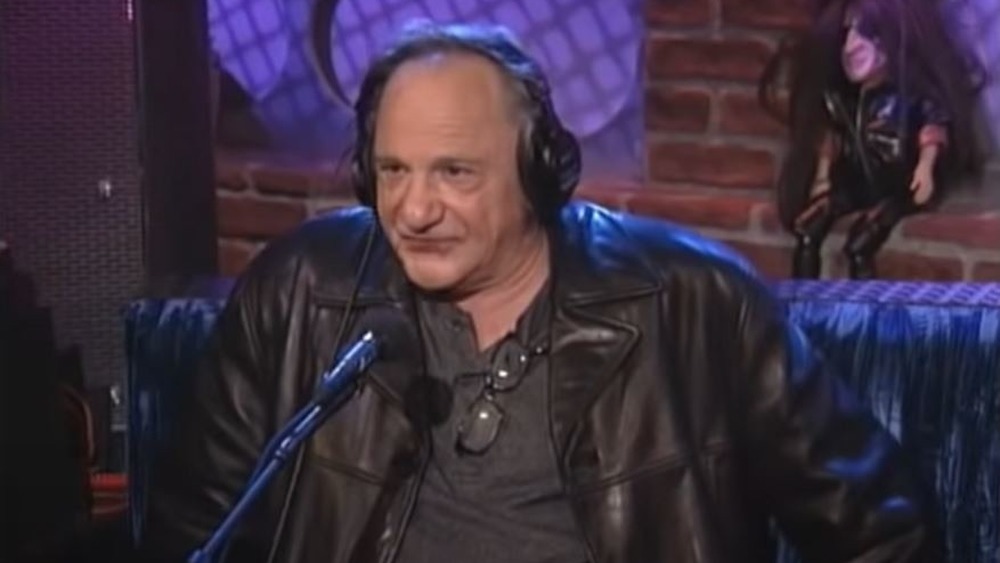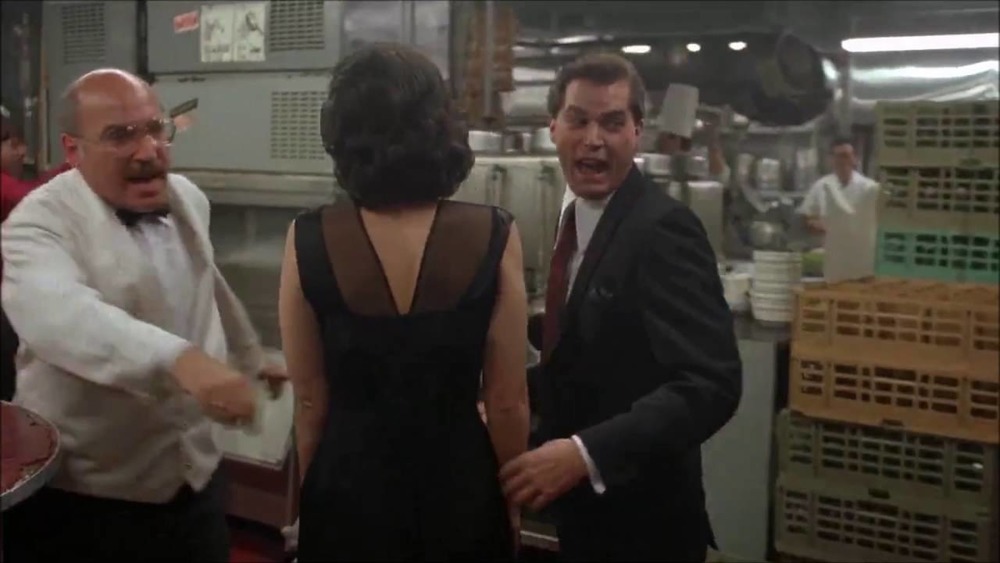The Untold Truth Of Goodfellas
What's left to possibly say about Goodfellas? Quite a bit, it turns out.
Goodfellas — the story of Henry Hill's (Ray Liotta) rise and fall within the mob — isn't just one of the best gangster movies of all time, it's one of the best movies of all time without any kind of qualifier. After all, it nabbed Joe Pesci a richly deserved Oscar and taught us all an important lesson about how to talk to former shoeshiners.
Goodfellas is so famous, so acclaimed, and so well-researched that it's hard to find anything new about it. Trivia about Goodfellas is some of the internet's oldest content, with websites littered with odd facts. At this point, it's common knowledge that the infamous "funny how?" scene was improvised, and there are countless deep dives into the film's music. As such, we decided to dig deeper and find some information about Goodfellas that even the most diehard fans don't know.
Frank Sivero sued The Simpsons
Frank Sivero played Frankie Carbone, the man frozen so stiff that it took two days to thaw him out for the autopsy. During production of Goodfellas, Sivero lived next to writers for a brand new show called The Simpsons. A decade and a half later, Sivero brought a lawsuit against The Simpsons over the character of Louie. The Hollywood Reporter covered the case in detail, which spanned four years.
Sivero launched his lawsuit in 2014, claiming that his neighbors knew he was working on a mob movie and that they based Louie — one of Fat Tony's henchmen — on his work in Goodfellas. He sued Fox for $250 million, stating that the resemblance infringed on California's publicity rights law. He also claimed that The Simpsons' production company, Gracie Films, said it would work with him, only for no projects to emerge, so this was probably more personal than business.
Just shy of a year later, the case was struck down on the basis of California's anti-SLAPP law, but not before some absolutely golden exchanges in the courtroom. After the defense made the case that Louie bore a physical resemblance to Sivero, the judge asked, "If I was a teenage girl, and I had a crush on your client, would I be satisfied with a pin-up of the character Louie?" Sivero's lawyer responded, "Probably." An appeals court upheld the ruling and struck the case down a final time in 2018, making it clear that Sivero couldn't sue for damages over a stock character — in this case, a generic mobster.
Spider's death caused actual confusion at a hospital
Almost a decade before playing Christopher Moltisanti on The Sopranos, Michael Imperioli played Spider in Goodfellas, a gopher who earns Tommy's ire and a bullet to the chest. Imperioli did his own stunt when his character was shot, which led to an actual misunderstanding he called his "unofficial Mafia induction ceremony."
Imperioli recounted on Popcorn with Peter Travers that as Spider died, he fell backwards into the bar while holding a glass. This was his first problem — the glass was real, and the fall shattered the glass and cut two of his fingers. Imperioli went to get stitches after the scene, but then he hit his second problem. He went to the hospital in costume, which meant that they were more focused on his apparent gunshot wound than his hand.
"So at the hospital in Queens, they think I'm about to die," he told Travers. "I think they think it's some drug hit. And I'm trying to explain to the people how it's my hand, and I'm okay. And they think I'm delirious. They don't know what's going on. They bring me in on a gurney." It was only after they examined him that they discovered the squibs, wiring, and makeup, at which point he got the treatment he sought in the first place.
The prosecutor who put Henry Hill in witness protection played himself
Towards the end of the movie, Henry and Karen Hill (Lorraine Bracco) meet with Ed, a US attorney offering them a spot in witness protection in exchange for Henry's testimony. And as it turns out, this character was played by the real Ed McDonald, a New York prosecutor who handled several cases connected to Henry.
McDonald told The Wall Street Journal that he was about to leave government work when director Martin Scorsese sent someone over to get pictures of his office for reference material. McDonald asked who was playing him and, if they didn't have anyone, volunteered himself. After finding out he was serious, Scorsese brought him in for a screen test.
In Goodfellas, the biggest point of contention in Ed's big scene is Henry's desire to bring his wife and children into witness protection, even if it means not saying goodbye to some relatives. During a panel at the 92nd Street Y, McDonald revealed that the real Henry went further. As he explained, after his first meeting with Henry, "The wife, the two children showed up. Mother-in-law, father-in-law, and two sisters-in-laws and two girlfriends. He wanted to bring them all into the program."
Several of Henry Hill's biggest crimes went unmentioned in Goodfellas
Goodfellas may be 146 minutes long, but it covers several decades' worth of crime. As such, significant portions of Henry Hill's life never made it to screen. This includes one crime so big that it earned its own documentary.
The real Hill — along with Jimmy Burke, the real-life Jimmy Conway (Robert De Niro) — were instrumental parts of the 1978-79 Boston College point-shaving scheme. The scandal saw the mob bribe members of the Boston College men's basketball team to prevent the team from winning by the point spread, essentially rigging the game for gamblers in the know. The scandal came to the attention of the FBI while Hill was looking for federal protection after getting implicated for drug trafficking, and he testified against his old associates for immunity. ESPN made a 30 for 30 about it titled Playing for the Mob, which was narrated by Ray Liotta. Even so, it was never mentioned during Goodfellas.
There were other bits about his life that Hill let out in his later years that likely weren't available at the time, but they're worth noting just the same. Specifically, there's his alleged involvement in the robbery of Estee Lauder — not the company, the actual Estee Lauder. Hill claimed that Lauder was bound and gagged while her home was ransacked, but they still took her out for drinks. Lauder's son acknowledged the crime took place but called Hill's account (via Page Six) "a totally made-up story and an obvious attempt to sanitize a crime."
Scorsese's parents played a big role in Goodfellas
Martin Scorsese regularly cast his parents in his movies, often in pivotal roles. His mother, Catherine, famously played Tommy's mom in Goodfellas and was given several important scenes. His father, Charles, less famously played Vinnie, the man in charge of the tomato sauce in prison who used too many onions. He was also in attendance when Tommy got whacked.
What's less known is how active Catherine and Charles were behind the scenes. Catherine would regularly cook for the cast and crew of her son's movies when she was on set. And during the filming of Goodfellas, Catherine and Charles pressed those sharp collars that all the gangsters wore. Catherine was a seamstress, and Charles pressed clothing, so they were about the only people Scorsese trusted to do the job correctly. It's hard to argue with results. GQ claims that the movie "led to a minor vogue for [the collars] in the early '90s."
Many of the most iconic moments were improvised
One of the most famous pieces of Goodfellas trivia is that Joe Pesci's "you think I'm funny?" rant was largely improvised. Based on a real experience Pesci had with a real wiseguy, the scene was worked out between the actors and shot on two cameras, despite never appearing in the shooting script.
What's lesser known is that this was one of several improvised scenes, something of a shock given that Goodfellas is such a tight movie. But editor Thelma Schoonmaker joked to GQ that, "The whole film was improvised." For example, when Karen tries to protest her innocence during the witness protection hearing, Ed tells her, "Don't give me the babe in the woods routine, Karen. I've listened to those wiretaps." When asked about that scene by the Wall Street Journal, McDonald said, "That was all improvisation. We did six takes of the scene, and ... I probably only used [that line] once."
Additionally, almost the entire scene where Jimmy, Tommy, and Henry show up at Tommy's mother's house was improvised. Catherine Scorsese, who played Tommy mother, was told that her son was coming home with friends and to serve them some food — though the director omitted the part about the body in the trunk. The only scripted part was the conversation about the painting. And believe it or not, even the scene where Spider got shot was improvised.
Ray Liotta didn't know Henry Hill well, but Robert De Niro did
Martin Scorsese didn't want Ray Liotta to meet Henry Hill while shooting Goodfellas. Liotta instead listened to hours of wiretaps on tape, often while driving to set, to pick up Hill's cadence and vocal mannerisms. He didn't get a chance to meet him until after the movie wrapped. Liotta told The New York Times that Hill didn't originally want to watch the movie, but when he did, seeing it was a cathartic experience.
Liotta was able to get a bit more specific after Hill's death. During a panel at the 2015 Tribeca Film Festival, Liotta said he met Hill a California bowling alley, where the gangster greeted him with, "Thanks for not making me look like a scumbag." That's when Liotta responded, "Did you see the movie?!" The two never spent much time together outside of that, with Liotta telling TMZ, "I only met him a few short times," but the two men will be connected in the public consciousness forever.
Meanwhile, Robert De Niro was in regular contact with Hill throughout production. Some sources indicate that he called Hill six times a day. De Niro wasn't so much looking for insight on Hill as he was Jimmy Burke, the real-life Jimmy Conway, and he was hoping for guidance on how Burke held his cigarette or poured ketchup or any other mundane task.
Many of the props were real
Martin Scorsese goes out of his way to give his actors the support they need, and in the case of Goodfellas — a movie about mobsters living luxury lifestyles — that meant going the extra mile with the props.
The cast and crew revealed how real everything was to GQ. Most, if not all, of the jewelry seen in the movie is authentic. The actors became accustomed to it, to the point where a scene was halted after Lorraine Bracco found out the set-dresser jewelry was fake. This led to the production designer running around Queens to rent actual garish gold jewelry. Bracco stated, "I had to fight for Karen. She was the princess, and princesses have real stuff."
Robert De Niro also insisted on using real money. Robert Griffon, the prop master, offered a few thousand dollars of his own cash, but he made sure that it was all collected and accounted for between cuts. Each of De Niro's outfits also had a matching watch and pinky ring, which he picked out himself from a Madison Avenue watch salesman.
Everyone's favorite prop was the Italian food — all authentic, cooked by Scorsese's mother, Catherine. Kevin Corrigan, who played Michael Hill, said, "It was conveyed to me, the importance of leaving the sauce alone and not tasting it. They were saying, 'That's a prop! You're not supposed to be eating it.' Which I didn't listen to."
A bad screening scared Warner Brothers
It's hard to imagine that one of the most acclaimed movies in history ever looked like it would bomb, but Warner Bros. had genuine concerns that Goodfellas would be poorly received. This wasn't so much a reflection on the movie as it was the test audience for the preview, but the fears were real.
The preview was screened in Orange County, California, home to a more conservative audience that wasn't crazy about gangster violence. As a result, the atmosphere at the screener was hostile. The crowd disapproved of all the brutal murders and beatings, and around 70 people walked out. Executive producer Barbara De Fina told GQ, "At one point, we wound up hiding in a bowling alley because the audience was so angry. One guy wrote F*** YOU all over the comment card." Then-Warner Bros. chairman Bob Daly added, "It wasn't the best time I ever had after a preview. ... We all were a little depressed."
As a result of the negative reaction, the movie opened in fewer theaters than originally planned, but it expanded after positive reviews and word-of-mouth.
Ray Liotta fought for the role
The casting process for Goodfellas was long and difficult, especially finding someone to play Henry Hill. The filmmakers (via GQ) needed someone who could commit heinous acts while remaining somewhat sympathetic. Several big name actors were discussed, including Tom Cruise, but Ray Liotta wanted the part. He knew he was the right guy for it, but he also knew that the studio wanted someone with more name recognition to match De Niro's.
Liotta approached Scorsese during the Venice Film Festival to talk about the role. Scorsese had bodyguards with him and was impressed how Liotta "held his ground, but made [the guards] understand he was no threat." It was a decidedly Henry Hill-esque trait, and it convinced Scorsese, who began lobbying for Liotta's casting. Producer Irwin Winkler, however, had little interest in Liotta. Winkler thought they could find a better candidate and kept trying to dissuade Scorsese from settling. This changed after Liotta and Winkler coincidentally ended up at the same restaurant in Venice, California. The two men discussed the role, during which Liotta completely convinced Winkler.
As with any project this scope, Cruise wasn't the only big name almost cast. Madonna was in the mix to play Karen, so much so that Scorsese and several others went to see her perform in Speed-the-Plow.
Henry Hill's activities after Goodfellas
The real Henry Hill did, indeed, have a hard time accepting that he'd have to live the rest of his life like a schnook.
Hill was kicked out of the witness protection program due to a series of violations. No two sources agree on exactly when he was booted out, with some saying '87 and some saying the early '90s, but the end result was the same. After he and Karen divorced, Hill dated a woman named Lisa Caserta. The two had a child together and were engaged when he died.
Hill may have been clean from 1987 to 1990, but he had a hard time maintaining sobriety. He struggled with alcoholism, once famously showing up for an interview with Howard Stern so drunk that he kept asking for a beer while already holding a Heineken can. He got arrested several times for public intoxication and disorderly conduct, attended rehab at least once, and was sentenced to 180 days in jail for possession of meth in 2005.
Hill's children, Gregg and Gina, published a book in 2004 about their father and growing up in witness protection, titled On the Run: A Mafia Childhood. It describes both the spoils of mob life and all of the fear and confusion that comes with it, painting an even less flattering picture than Goodfellas did. Gregg and Gina severed themselves from their dad, but Hill's manager claimed that later in his life, they were all in regular contact.
Hill also took on several other projects, including co-writing several books on his time as a gangster and owning a restaurant for a time. Hill died of heart disease in 2012, with many wondering why he was never whacked.
The story behind Goodfellas' Copa scene
One of the most iconic scenes in Goodfellas takes place at the Copacabana, during which Henry and Karen are followed through various parts of the club for three unbroken minutes. The "Copa scene" was a landmark use of the Steadicam, but shooting the scene was one of the more complicated parts of the movie. In fact, the man handling the Steadicam — Larry McConkey — thought there was "no way" the scene would ever work (via Filmmaker Magazine). However, it all came together far more efficiently than anyone expected.
Lots of little changes were made to accommodate the time and space needed for the shot. Scorsese wanted a longer hallway for a longer preamble. Production designer Kristi Zea told GQ, "We had to build a hallway, and we literally took the walls away while the camera was in motion, so that they were gone by the time Ray and Lorraine showed up in the main room." They also started creating obstacles to slow the actors down for the camera to catch up while adjusting from wide to tight shots. McConkey described the process of adding bits and pieces — Henry giving the doorman a tip, a couple blocking the way by making out — as adding character to the scene, which made it more important than any camera trick.
Liotta pointing to the stage was McConkey's cue to move and wrap the scene up. In the end, it only took seven or eight takes, and it was in the can before lunch. And what inspired the Steadicam scene in the first place? Brian De Palma had a long Steadicam shot in The Untouchables, and Scorsese thought it would be funny if his movie had one that was a minute longer.
